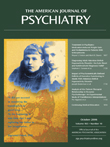“There were 200 of us in the upstairs all crying that this was going to be our last day.”
December 26, 2004, was the day that the world changed for many people bordering the Indian Ocean. Tsunami—a word many had never heard before. How could they have anticipated the danger that it wrought and the carnage in its path?
Some walked toward the danger in disbelief and curiosity, trying to gather family, grab their jewelry, or pick up the exposed fish otherwise difficult to catch. If one could climb, perhaps there was a cement roof to head for, or a tall tree. But there were those who could not climb. Perhaps it was possible to swim to safety. For some that was true. Others could not swim.
“The water is coming! The water is coming!” What did that really mean?
Throngs of people ran away from the water, some falling, some injured. They saw the fear and heard the cries about those who had been washed away: mothers, fathers, children, aunts, uncles, grandparents, friends, neighbors, whole families.
The water receded at different rates depending on the location. There used to be a hospital there. Where is it? There used to be a home for elderly. Where is it? Where is the village? What happened to the temple? Where is the church? Where is the school? Where is my house? Where is my boat? Where is my child?
One man’s house was about 100 meters from the sea. On that fated day, he heard a sound that he had never heard before coming from the seashore. It sounded like thunder. He also noticed that the water was increasing. He ran to the village and warned people that a wave was coming inland and yelled for people to leave their homes. The water suddenly rose to his neck, and then receded. He ran to his house as the water began to rise again. He climbed to the tower of the temple, and watched as his home was demolished. He saw women running to their homes to get their jewelry and valuable things. While holding onto the tower himself, he saw two women floating. He threw a rope to save them. One could not hold onto the rope, and as the waters rushed she perished. It was his aunt. As the water receded, he saw many bodies entangled, naked in barbed wire, remnants of the conflict that had taken place. Under a coconut tree there were the bodies of a mother and child, locked in embrace. What could those last moments have been like, when the force of love was swallowed by nature’s power?
When the invitation came to do some work, I quickly responded. I felt a deep need, as if from my soul, to go to help in some way. Nothing, including the newsreels or makeshift home videos prepared me for the powerful destruction of a 40-foot wall of water.
What did I learn from my work talking to survivors?
Ordinary people did extraordinary things to warn and save family, neighbors, friends, and strangers. Many people were injured in their efforts to save themselves and others. Momentary decisions often made the difference between life and death. People tried the best they could with what they knew. They desperately fought against the rising force of the water. The will to survive is a power in and of itself. Sometimes their efforts, although heroic, were unsuccessful. Their efforts were particularly significant given that many did not know what a tsunami was, nor had they ever experienced one. Webster’s defines courage as the ability to face danger without fear. I wonder if it should not be the ability to face danger despite fear.
Mass exposure to the severely injured and the bodies of those who have perished challenge our coping capabilities. Those who have experienced traumatic events need to give meaning to what has happened. The experience and expression of communal suffering and understanding is important and best when culturally derived. It is important not to superimpose Western solutions to a situation, but to first learn the ways in which people indigenously give meaning to what they have experienced, how they cope, and the ways they try to heal themselves. There are many systems of belief that try to explain creation, destruction, loss, and hope. By not immediately medicalizing suffering, other explanations and long-standing communal rituals can help to explain behaviors, beliefs, and feelings as well as diminish the impact of trauma over time.
The suffering continues in Sri Lanka and the region as people face major challenges in attempting to rebuild their lives. In the end, the resilience of the human spirit leads to rebuilding even when faced with thousands upon thousands of miles of coastline with unfathomable damage. Life can change in a minute, making us see clearly what is truly important. But it was shocking to return from the region to see that the harsh realities that people are facing were not particularly newsworthy anymore. People had moved on. While we were working in the rubble, a Sri Lankan man said to me, “Humanity is humbled by something like this.” The question that remains in my mind is: for how long?

